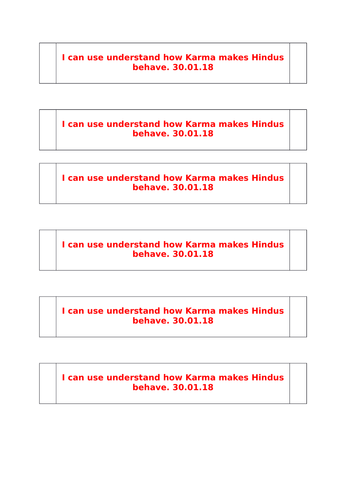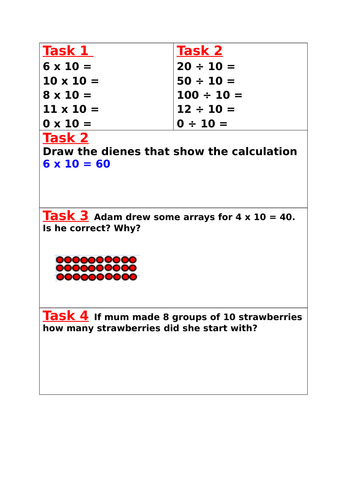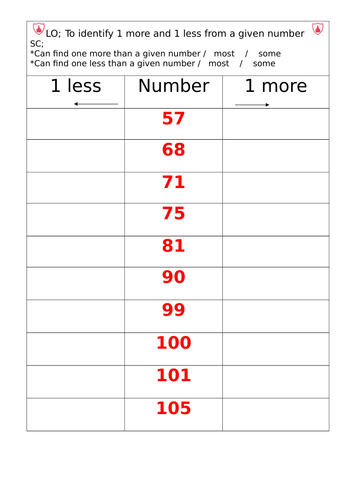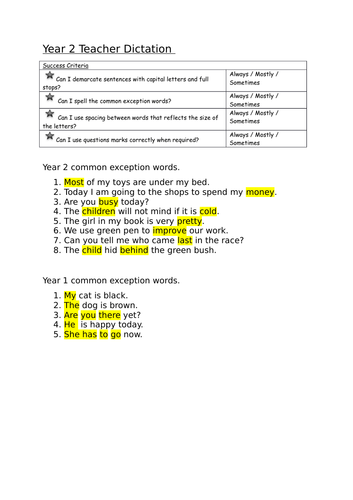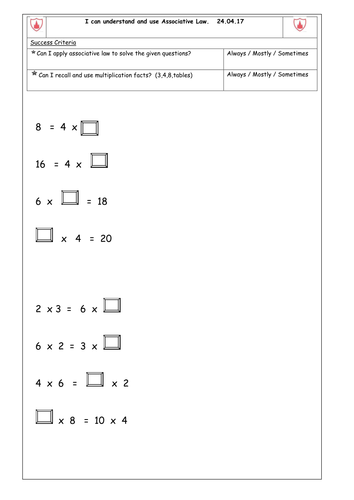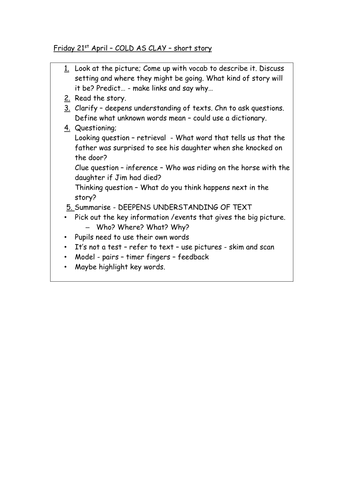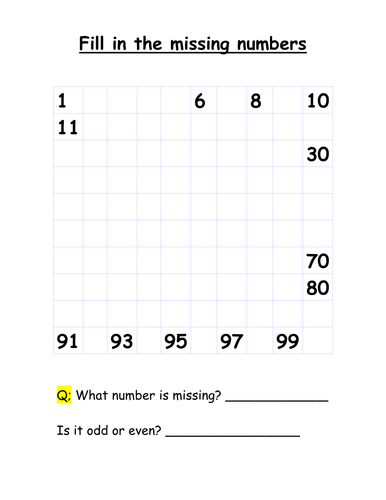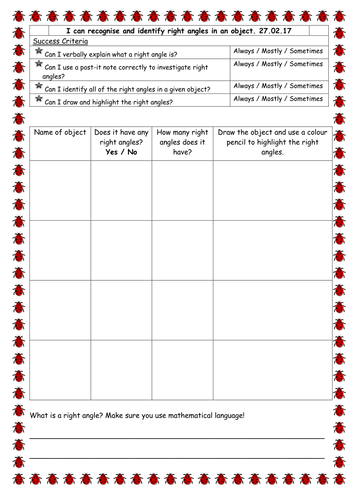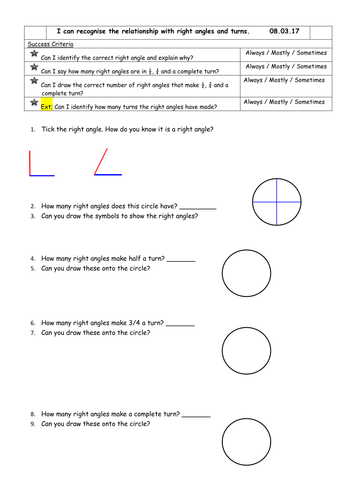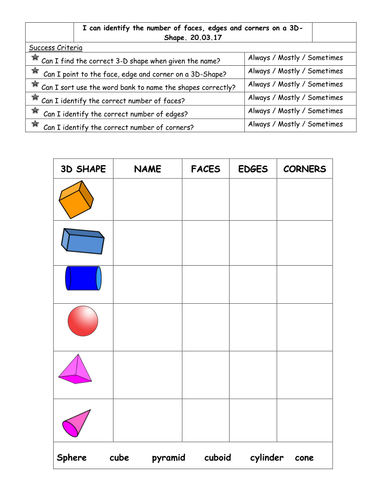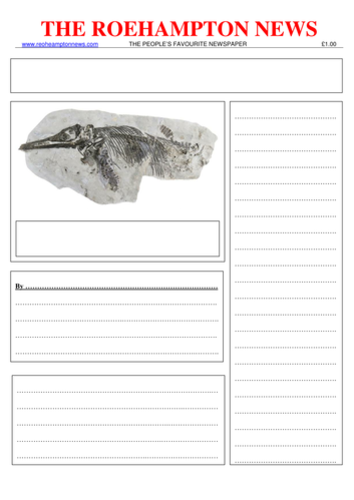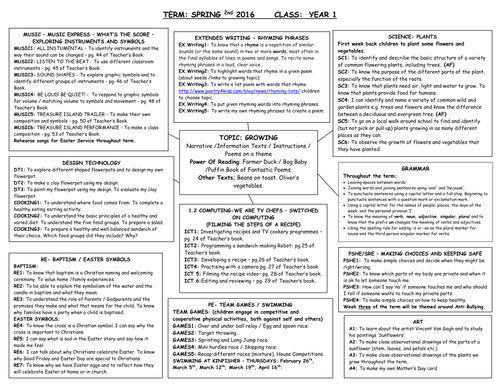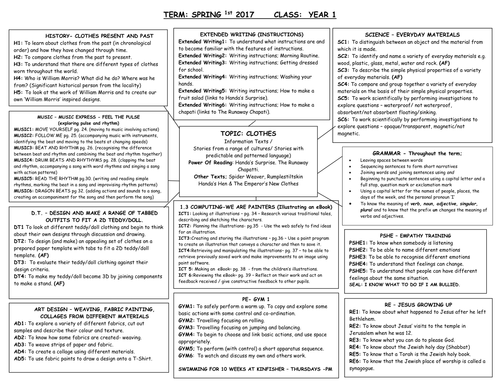
90Uploads
89k+Views
3k+Downloads
All resources

Exchanging amounts of money KS1 Year 2
This is a simple worksheet where the children have to work out what coins are needed to exchange a given amount. E.g. £5 for five £1, £20 for ten £2 etc.

RE Hinduism Year 2 - To understand how Karma makes Hindus behave. Sorting activity.
This is an activity where the children have to organise the actions of Hindus into 'would do' and 'wouldn't do'. There are two red sorting circles and a sheet of images for them to cut out. The LO is also included.
At the end of this activity I asked two questions to further their learning....What does the word ' Karma' mean? (action) and Do you believe in Karma? Why? the children wrote these in their books and answered them.
I hope this helps and saves time!

Maths task worksheet: fluency, reasoning and problem solving on 10 x table
This is a worksheet for Year 2 which focuses on multiplying by tens (x 10 tables) with some division. There are four tasks.
The first one is fluency - recalling x 10 and dividing by 10 facts.
Task 2 asks the children to draw dienes/rods for the given multiplication fact.
Task three is a reasoning question.
Task four is a problem solving question.
Can easily be edited and will save time!

Find 1 more / 1 less than a given number (0-100) Year 1
These worksheets are differentiated for HA/MA/LA. The children have to look at the given number in red and they have to write one more and one less. Can be edited. LO and Success Criteria are given at the top of the worksheets to make marking easier.

Year 2 KS1 SATs style questions on a smart notebook (mostly arithmetic)
This is a smart notebook slide I have created to work through with my current year 2 class. I have created the questions to look like those given in the SATs. The questions are mostly arithmetic and I will try and find some time to do a reasoning one in due course. (There are over 40 questions)
The questions can be edited to suit your requirements which will save a lot of time. I hope this helps in some way :)

Year 2 Dictation sentences and some Year 1 dictation sentences. Success criteria.
This includes the success criteria for the lesson.
There are 8 simple sentences for the Year two children, common exception words are highlighted in yellow. There are 5 simple sentences for the children working at year 1 level - again year 1 common exception words are highlighted in yellow.
You could even copy the Success Criteria table onto another sheet and cut out and stick into their books which will make it easier to mark!

Associative Law Worksheet -(missing number multiplication) and brief lesson Plan Y3
This is a worksheet I made after introducing Associative Law to Y3. I couldn't find any questions online to help with delivering this to Y3 and so I made them up. The chn enjoyed these and it also helped my to assess their recall of multiplication tables, 3,4, and 8! The worksheet ha the LO & SC and there is a brief plan for the lesson which I have also attached.
Will save time! I hope it helps.

Collecting and interpreting data on favourite biscuit - Year 3
This is a worksheet where the chn have to discuss what the tally chart is about. LO and SC are included on the worksheet. Then the chn have to write the headings above the columns on the chart. Next the chn have to collect the data themselves, asking their peers which biscuit is their favourite and record it in tallies on the chart. Chn have to complete the chart and then discuss what they have found.
Finally I asked the chn to draw a bar graph and then analyse the data in their books.

Reciprocal Reading Planning Example - Y3
This week we have begun to introduce Reciprocal Reading to Y3. For the first session we did it as a whole class. First I handed out the picture that went with the story. We discussed it and came up with words which described the pictures and then predicted what the story was about.
Next we clarified any unknown words / phrases, encouraging the chn to ask questions to each other and then I gave them three question, a looking one (retrieval) and clue (inference) and then a thinking question - their opinion. Finally we summarised the passage using the key points.
The children loved this passage - it can be found online - COLD AS CLAY (from a book full of short scary stories) and the photo was of two people on a horse.

TOPIC WEB - YEAR THREE - LET THERE BE LIGHT- MEDIUM TERM PLAN
This is a topic web for Y3 on the topic let there be light. If anything this will be useful to have simply for the LO's which you can use and helot to guide you plan the term. The children are loving it so far!

Missing numbers on a 100 square - Year 1 or EYFS
This is a 100 square where the children have to write in the missing numbers, forwards and then backwards. There is also a question asking them what number is missing (zero) and another question asking if it odd or even.
This is also perfect to use as an assessment and will save time!

Creating a persuasive poster on the Caribbean Year 3
This is a resource where the children have to create a persuasive poster on the Caribbean. There are two photos of a Caribbean beach which the children can choose from. Then the children use the boxes provided to write their persuasive information on and cut out and stick on the poster. I encouraged the chn to use all of the features of persuasive posters e.g. alliteration, bossy verbs, slogans, rhetorical questions, facts etc. They loved this lesson. I also enlarged the sheets to A3. Will save lots of time!

Introduction to Recognising and identifying Right angles - worksheet - Year 3
I made this worksheet for an observation on introduction to right angles. I have also uploaded the SMART Notebook that I used along side this lesson which helped me to keep the lesson flowing at a good pace and really embed the new learning.
The worksheets are differentiated for SEN - MA/LA - HA. All sheets have the LO and SC on them which the chn can read and use to structure their work to make sure they are successful.
The children were given a tray filled with objects which they had to use post-it notes to identify any right angles and then fill in the table on their worksheet using the correct mathematical language.
Will save time!

Introduction to Right angles Year 3 - identifying and recognising right angles
This is a smart note book slide that I made for my lesson on introducing right angles to Year 3. I worked through each page and then gave them post-it notes to identify right angles within the classroom. After that they were given a tray of objects on their tables to see if they could identify and recognise any right angles. They completed the worksheet I gave them (which I will also upload) and then in the plenary we used the last page of the slide to extend their thinking and learning - a reasoning question. Will save plenty of time!

Horizontal bar graph - interpret and present data, Year 3, True or false questions, differentiated
I made this worksheet for Year three children. They have to label the horizontal bar chart, complete the tally chart and then answer some True or False questions and explain how they know, to prove it. The questions are differentiated. LO and SC on the worksheet to help with marking.
Will save lots of time.

Right angles and turns Year 3
I made this worksheet for a lesson recognising the relationship between right angles and turns. The children have to identify the right angle and then work out how many right angles in turns e.g. 1/2 , 1/4, 3/4 and complete turns and then draw them. There are two worksheets which are differentiated and both have extension activities where they have to work out how many turns the right angle has moved! Th worksheets have the LO and SC to make the structure of the lesson and marking easier.

Year 1 or SEN Worksheet on properties of 3D Shapes
This is a colourful worksheet where the children have to name the 3D-Shape and then find out how many corners, edges and faces each shape has. The LO and SC is on the worksheet which will make marking much easier! I have used this with my lower group children in Year three and they loved the colours! I also gave them the physical objects/ shapes to manipulate and find the answers.

Newspaper report Mary Anning finding the fossil - differentiated Year three
This is a newspaper report ready for the Year three class to complete. We have read the story 'Stone Girl Bone Girl' and we have studied features of newspaper reports, identifying them in real newspapers and other newspaper report texts using highlighters. It is now time for the chn to write their own, based on Mary Anning finding the sea monster fossil.
For the more able group I have left this blank - they have to include a catchy heading, by line, strapline, quotes, paragraphs, caption for the photo etc.
Then I have differentiated the other groups where some have to think of the strapline / introduction, some have the strapline given, some have the heading given and some have to think of it themselves etc. All worksheets have a photo of the fossil on there. Easy to edit and will save heaps of time! The title of your newspaper will have to be changed as I have done this one to suit our school.

Topic Web - Growing - Year 1 - Medium Term Plan with Learning objectives
This is a topic web used for Growing in Year 1 for Spring 2.
This includes;
Science - Plants
Extended writing - Rhyming Phrases
Music - exploring instruments
PSHE - Making the right choices and keeping safe
ICT - filming a recipe
DT - Making clay flower pots / cooking
RE - Baptisma nd Easter symbols
PE - Team Games

Medium Term Planning Topic Web Year 1 - Clothes
The topic web includes Learning objectives on;
Extended writing - Writing instructions
Grammar
PSHE - Empathy training
RE - Jesus growing up
PE - Gym
ICT
DT - making tabbed outfits or a teddy
Art and Design - weaving
History - clothes present and past
Music
Science - everyday materials


